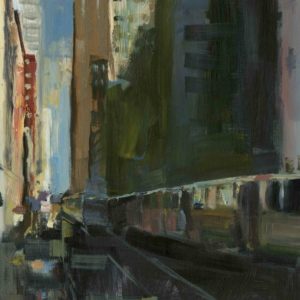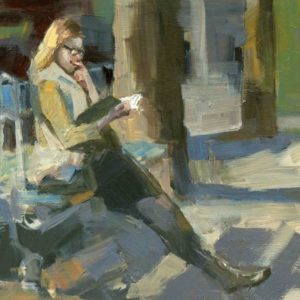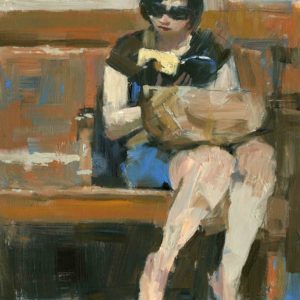Inside the Studio
 Darren Thompson’s Message of Life is Clear and Strong
Darren Thompson’s Message of Life is Clear and Strong
What are the major themes you pursue in your work?
All the major themes I pursue have to do with my everyday encounters in the environment I live in. I find it to be a never ending resource for adventure and subject matter. I almost always find something that I’m inspired to paint. I’ve always been drawn to this type of work and these urban and figure scenes, since I began a career in art 30 years ago. I think your message needs to be clear and strong.
How did you first get interested in your medium, and what draws you to it specifically?
I didn’t become interested in oil until about the year 2000. Prior to oils, I worked primarily in watercolor, doing caricature illustrations for magazines and newspapers, nationally and internationally, dating back to 1991. The watercolor illustration was great training for my work today as a painter. The drawing and design skills I developed during the beginning was invaluable. I have been self taught in oils via trial and error for the last 17 years.
How has your style and practice changed over the years?
My style and practice changed over the years due to necessity. I currently work another job full-time which limits my time for painting. My goal has always been to execute lively and loose works. If you enjoy painting it, others will enjoy looking at it. I’ve developed a formula over the last 8 or 9 years and I’m still working on it, constantly tinkering with it, sometimes improving, sometimes not but always intrigued with the process.
Can you walk us through your process? Do you begin with a sketch, or do you just jump in? How long do you spend on one work? How do you know when it is finished?
I work entirely from photographs, assembling various photos to create my final image. I make my own support by gluing Raphael linen to a hardboard panel. I premix all my colors. I use alkyd paints, a fast drying oil paint. I premix around 15 colors and keep them in an airtight container. These colors last about a week. I do this to save time and it enables me to work faster as well, almost like taking a crayon from a box. I execute the painting in six steps, getting it very close to finished. Then I photograph it, looking at it in a different context before I finish it completely.
Who are some of your favorite artists, and why?
My favorite artists are George Bellows, Hopper, Reginald Marsh, Isabelle Bishop and Richard Diebenkorn. I really like the urban realism painters of the 1920’s, 30’s and 40’s. The gritty sense of these works have always appealed to me. Recently, Andy Warhol has been a major influence. Not because of the style or direction of his works, but because of his total body of work. Art just poured out of him for years. This quality has propelled me to produce 200-300 works a year.
What are some of your favorite experiences as an artist?
A few of my favorite experiences as an artist has been seeing my artwork published in major periodicals in my days of illustration – back when print media ruled, prior to the internet! I would go into bookstores and see my work in publications including New York Times, GQ, Time, Sports Illustrated and Fortune. Recently, selling my artwork online has been a great experience. The idea of selling a painting to someone, whether they be next door, across the country or across the world, makes me realize how small the world truly is.
Who are your favorite writers?
Jackie Thompson












